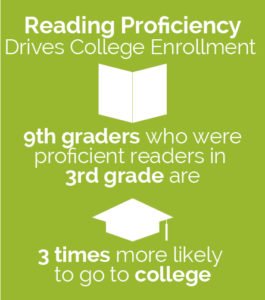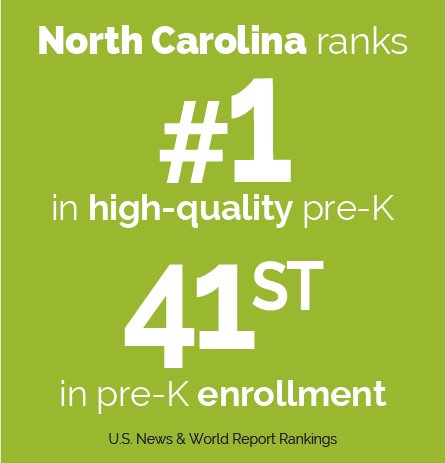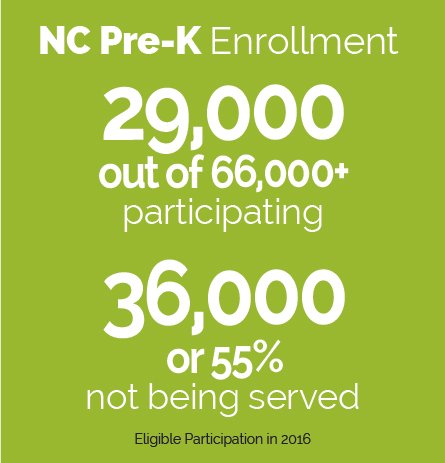DURHAM (Aug. 10, 2017) – Some of North Carolina’s most powerful CEOs understand the importance of early-childhood education and making sure students read well by third grade.
But do the politicians?
At the North Carolina Chamber’s 2017 Conference on Education, a panel discussion focused on the importance of early literacy in transforming the future workforce.
Dale Jenkins, the CEO of Medical Mutual Insurance Co. of North Carolina, shared projections from the Georgetown Center on Education and the Workforce for a 24% increase in STEM-related jobs, a 27% increase in health-care jobs and a 29% increase in finance and insurance.
“All these jobs … are going to require higher levels of education,” Jenkins said.
The Georgetown Center projects that by 2020, 67% of North Carolina jobs will require degrees and training beyond high school – yet only 42% of North Carolinians have that level of education, Jenkins said.
 Third-grade reading proficiency is one of the strongest predictors of student success, he said. Ninth-graders who read proficiently in third grade are three times more likely to go to college, while students who don’t read proficiently by the end of third grade are four times more likely to drop out of school.
Third-grade reading proficiency is one of the strongest predictors of student success, he said. Ninth-graders who read proficiently in third grade are three times more likely to go to college, while students who don’t read proficiently by the end of third grade are four times more likely to drop out of school.
And 62% of North Carolina fourth-graders aren’t proficient readers, Jenkins said. The state has started to attack the problem with its “Read to Achieve” program, which began in 2012.
We hope that will make a difference in an embarrassing statistic: 46% of North Carolina high school graduates met none of the four ACT college-readiness benchmarks in 2016.1
Jenkins explained how a task force of CEOs from AT&T, Bank of America, BB&T, Biltmore Farms, Cone Health, Ingersoll Rand, Martin Marietta, Medical Mutual, National Gypsum, PNC Financial Services, Red Hat and SAS recommended a three-fold approach to increase third-grade reading proficiency.2
One of those recommendations was to increase access to high-quality, full-day pre-kindergarten for North Carolina children.
Jim Hansen, the Regional President of PNC Bank for the Eastern Carolinas, said high-quality pre-K provides a foundation, increasing a child’s literacy development by six to eight months – a significant advantage for a 4-year-old.
Hansen noted that his own company has dedicated $350 million over 13 years to an early-childhood program called Grow Up Great; every dollar spent on high-quality early education generates $13 in long-term savings.3
 A Duke University study found that students in NC Pre-K had higher test scores in reading and math, reduced placement in special education and fewer were held back in grades 3, 4 and 5, Hansen said. The Duke study found that the benefits of pre-kindergarten persist or increase through the 5th grade.
A Duke University study found that students in NC Pre-K had higher test scores in reading and math, reduced placement in special education and fewer were held back in grades 3, 4 and 5, Hansen said. The Duke study found that the benefits of pre-kindergarten persist or increase through the 5th grade.
And because fewer children were assigned to special education, quality pre-K generated $358 in savings per third-grade student, or $46 million in savings over four years, he said.
Hansen noted that U.S. News & World Report ranked North Carolina’s pre-kindergarten program No. 1 in the nation in quality4 – yet 41st in enrollment.5
“We have the quality, but we’re not providing the access,” he said.
 Some 29,000 children participated in NC Pre-K last year – yet more than 66,000 are eligible, which means over 36,000, or 55%, were not being served.
Some 29,000 children participated in NC Pre-K last year – yet more than 66,000 are eligible, which means over 36,000, or 55%, were not being served.
After debate this year in the NC General Assembly, legislators agreed to provide $27 million over two years to expand access to 3,525 more students.
That’s less than 10% of those eligible – more than 30,000 children are still not being served.
And that raises a question: The data are strong and convincing. Conservative CEOs are making the case that high-quality early education is a worthy investment to prepare our future workforce and save money long term.
So why aren’t we taking every child off that wait list?
1 http://best-nc.org/wp-content/uploads/2015/01/BEST-NCs-2017-Facts-Figures-vPDF-Optimized-0313.pdf, p. 64.
2 https://ncchamber.net/wp-content/uploads/2017/08/BRT_panelpresentation.pdf.
3 https://www.pnc.com/en/about-pnc/corporate-responsibility/grow-up-great/our-great-story.html.
4 https://www.usnews.com/news/best-states/data-explorer?chart_id=62559&metric_id=15.
5 https://www.usnews.com/news/best-states/data-explorer?chart_id=43123&seed=0.629433450527&metric_id=14&offset=40.

Leave a Reply